These habits, products and ways of life are disappearing. Are they all things millennials killed—or were they dying anyway?

18 Things Millennials Have Been Killing Off in the Last Decade


Napkins
Oh, those lazy millennials, so lacking in table manners that they believe you don’t need napkins and can just use paper towels—don’t they work just as well? In fact, many people criticized millennials for killing the napkin industry after one study, as reported by the Washington Post, found that only 56% of this generation bought napkins in the past six months, while 86% bought paper towels. Sure, paper towels are less formal, but millennials don’t just go for informality—they want convenience.
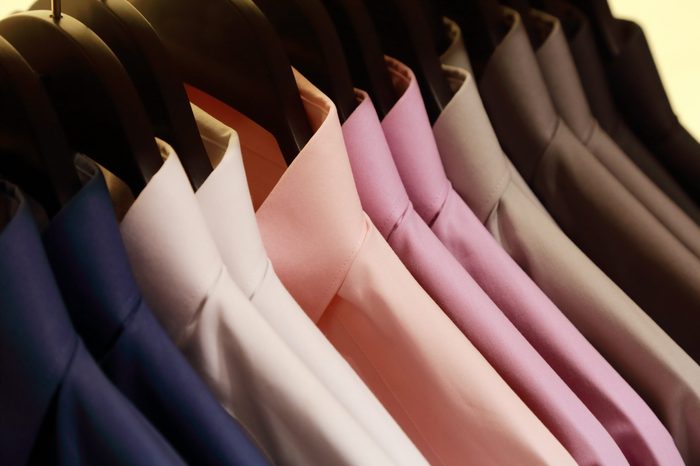
Formal dress codes
Speaking of formality, we’re not living in Downton Abbey—no one of any generation gets dressed up for dinner anymore. Even at work, formal attire has been in flux since women entered the workforce in the 1920s. While some industries still require a suit, most are decidedly less stuffy, throwing off rigid dress codes to allow more personality and creativity to shine through. According to one survey, 40% of millennials look to Facebook founder Mark Zuckerberg—famous for a work uniform of hoodies, jeans and T-shirts—as their business role model. Ironically, though, new expectations mean you might still be judged for picking unsuitable work outfits—but now, it’s based on your wardrobe’s “cool” factor.

Large homes
Truth is, millennials just aren’t able to buy that big house in the suburbs anymore. “Homeownership rates are lower than in previous generations—among other things, you can blame student debt and high prices in coastal cities, where the best jobs are found,” says Miron Lulic, founder and CEO of SuperMoney. “For a generation that is often portrayed as privileged, the millennial population is bearing an unprecedented burden of cost inflation: While real income has increased moderately for some [namely, the college-educated], it’s nowhere near enough to keep up with the burden of cost inflation in key areas like homes.” Plus, this generation prizes convenience, environmentalism and a minimalist lifestyle, so forgoing the McMansions is an obvious choice.
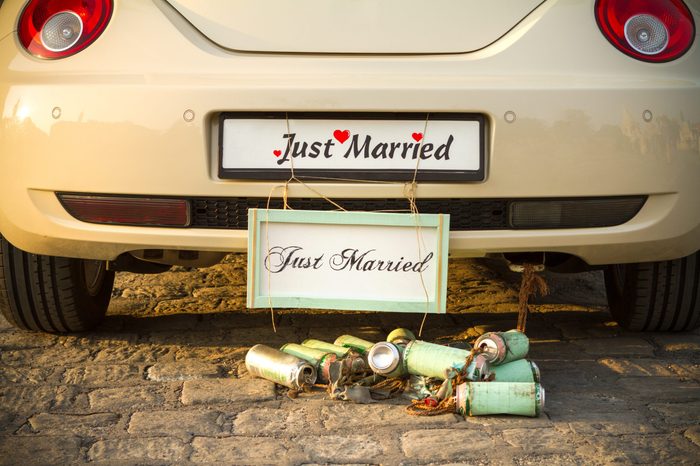
Traditional marriage
Millennials are not only putting off buying houses: They’re putting off—or swearing off—getting hitched too. A 2023 survey from the mental health platform Thriving Center of Psychology found that 85% of millennials and Gen Z don’t feel marriage is necessary to have a committed, fulfilling relationship. And a bigger percentage of millennials (21%) than Gen Z (7%) say they’re not planning on ever getting married, according to the survey.

Divorce
It appears millennials aren’t just ruining marriage—they’re ruining divorce too. The divorce rate per 1,000 people dropped from ten to just over seven from 2008–2022, according to the United States Census Bureau.
That may be because millennial couples are getting married later than couples did two decades ago. “A traditional finding in the research on marriage stability is that age at first marriage is related to the likelihood of divorce,” says Pew Research Center senior researcher Richard Fry. “Marriages involving younger spouses were more likely to break up.” So one of the secrets to a lasting marriage is tying the knot later.
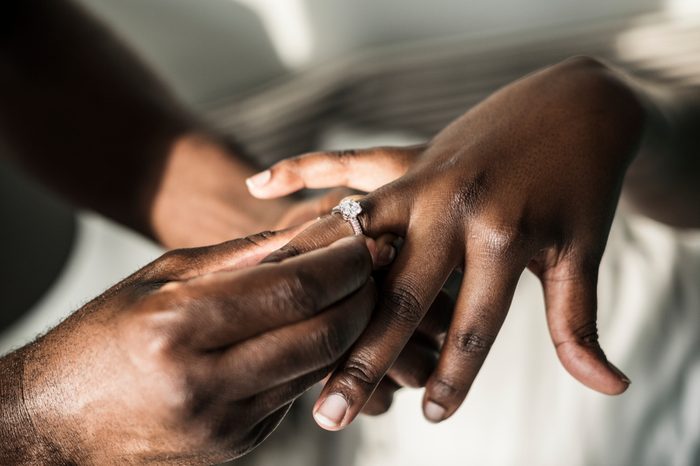
Pricey engagement rings
Fewer marriages means fewer fancy weddings—and fewer expensive engagement rings too. This also reflects millennials’ changing priorities away from material possessions. “Millennials aren’t about tradition for tradition’s sake—diamonds equal love? They don’t necessarily buy that,” Flehinger says. Plus, “millennials shop with a conscious—they are aware, and their dollars show it,” Flehinger says. “They know about blood diamonds [diamonds mined to finance wars], and their dollars reflect that. Diamonds are bad for the environment—they care about that too.”

Dinner dates
If millennials aren’t getting engaged, are they at least dating? Not in the same way Gen X did, when going out to dinner was standard. But the trend away from dinner dates makes sense: Who wants to sit across from a stranger for two hours, especially when you’re broke and the food you’re eating is more expensive than just having a drink or a coffee? Plus, with online dating being so common, many millennial daters haven’t actually met face-to-face, making a long dinner date less appealing (and potentially awkward).
Being single is just not as big a deal as it was in previous generations, with a survey from online dating app Tinder finding 72% of young millennials saying they make a conscious decision to stay single for a period of time.
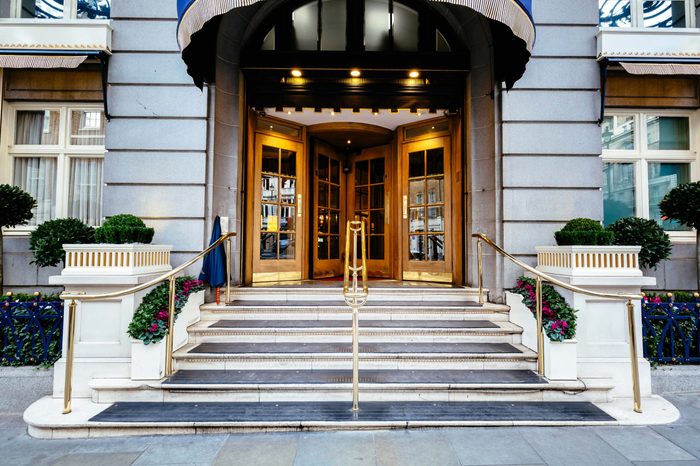
Traditional hotels
When was the last time you unpacked your clothes into the hotel dresser or sat down at your room’s desk to use the complimentary pen and stationery? While older generations had only hotels and motels to pick from for out-of-town stays, millennials invented another option: the home away from home. Turns out, Airbnb was launched by two millennials: Brian Chesky and Joe Gebbia.
Today’s hotel chains are pivoting to try to keep up with millennials who just want a comfy bed to sleep in, plus communal spaces to hang out with other guests. This generation is gravitating toward staying in homes and apartments (through apps like Airbnb and Vrbo) or checking into boutique hotels that provide the unique, authentic atmosphere that chain hotels don’t.
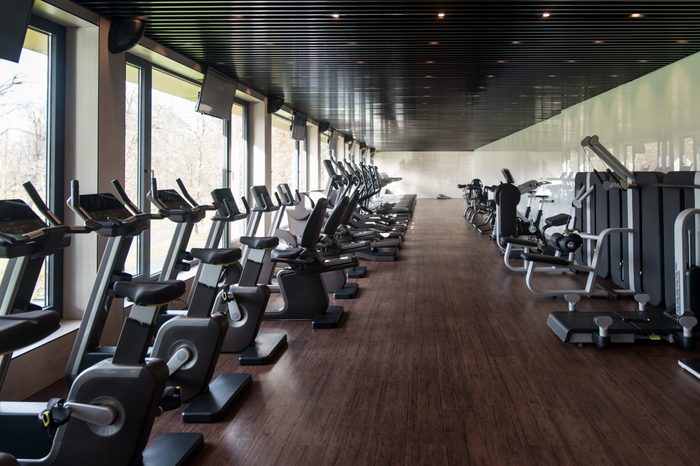
Big-box gyms
Millennials don’t go in for giant gyms that offer every piece of exercise equipment on earth. Instead, they prefer a tailor-made experience that lets them connect as a community, such as SoulCycle, Pure Barre and Barry’s Bootcamp. “Boutiques have successfully created the concept of ‘you show up, we will do the rest’—all the person has to do is consistently get themselves to class and everything is set up for them to succeed,” says Conor O’Loughlin, chief revenue officer of ABC Fitness. “In addition, the class-based nature of boutiques means that members are driven by the motivation and support of their fellow members.”
This smaller membership base creates a tighter-knit community, allowing members to feel part of something. “This explains why boutiques are good at building distinctive tribes their members are proud to show off and tell their friends about, which is why they are growing so rapidly,” he says.
But don’t count out the big box gyms—they just need to adapt to win this generation back. “Many of the big-box gyms are becoming more class-based and member-experience focused,” O’Loughlin says. “They also have the ability to price local independent studios out of the market, assuming they can modernize their programming, pricing and member experience.”
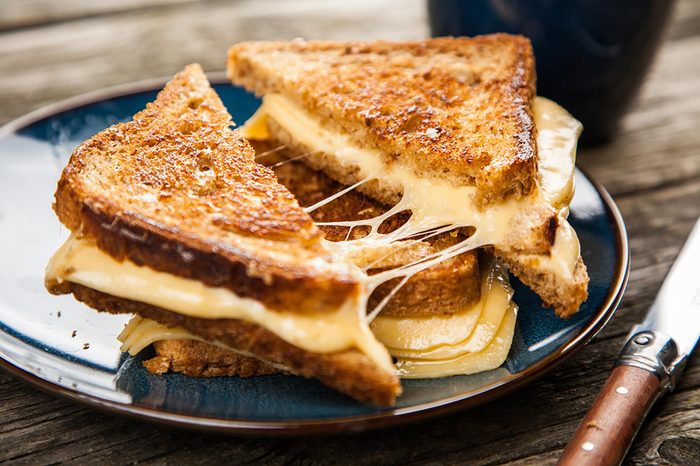
American cheese
Another staple of the childhood of many an older generation that’s being squashed by millennials? American cheese, which is often laden with preservatives or made with so little actual cheese it can only be called “cheese product.” Millennials strive for nothing if not authenticity, so they prefer real, and more expensive, cheeses like asiago, gouda and fontina. Sales of Kraft Singles and Velveeta, meanwhile, are down 1.6% and have been dropping for the past several years.
But if millennials are cash-challenged, why are they going for expensive cheese? “I see re-engaging with food choices and challenging the status quo around food to be acting in one of the spaces where they are able to exert control,” Skinner says.

Cans of tuna
Without American cheese, how can we have tuna melts? Oh, wait: Canned tuna itself is another food this generation is turning its back on, with sales dropping 42% over the last three decades. But why is this lunch staple one of the things millennials killed? It could be because for convenience-driven millennials, opening a can of tuna is too much work—and they might not even own a can opener, one exec from tuna company StarKist told the Wall Street Journal. On the whole, this generation is eating less processed food and more fresh fish than the generations that came before them.
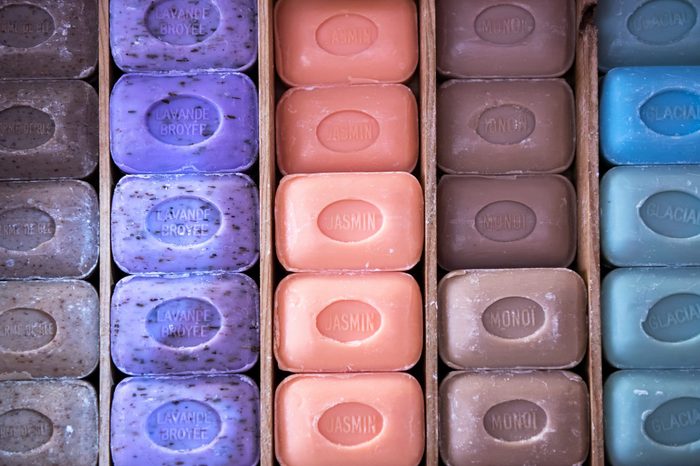
Bar soap
One industry that may have successfully adapted after being “killed” by millennials is soap. The bar variety was considered icky, harsh and less convenient than liquid options, which may be why sales dropped 2.2% from 2014 to 2016, according to Mintel research. Now, though, “bar soap, previously killed by millennials, is actually making a resurgence,” Flehinger says. “They killed it originally because formulations hadn’t been changed for years, and millennials are very aware of using products that work best for their skin. Now, though, soap companies have adapted with better and different formulations and less of an environmental footprint—i.e., less plastic—than liquid soaps, so millennials are adapting and switching back.” The truth is in the numbers: Per Horizon Grand View Research, the bar soap market in the U.S. is expected to grow annually by 3.7% through 2030.

Wine corks
Although older generations may view wine bottles with screw caps as lower quality, millennials don’t, according to a report in the Atlantic. And actually, the convenience of screw caps—and the lack of need for a corkscrew—may be a selling point for this wine-loving generation. In addition, a concern over cork spoiling (which has been largely rectified by cork producers) may have been responsible for corks losing an estimated 40% of the wine closure market in the last generation. Yet millennials may find more to love about corks, including their sustainability: Only the bark of the cork tree is harvested, allowing the trees to flourish and provide environmental benefits.

Motorcycles
Sales for motorcycle giant Harley-Davidson have stagnated, with a recent analysis showing millennials just aren’t buying bikes at the same rate as previous generations. Why? For one, we now know that riding a motorcycle is more dangerous than we previously realized. But also, millennials just aren’t into motorcycling as a hobby. Instead, they would be most likely to ride for “ease of transportation.”
But in another example of “adapt or die,” Harley-Davidson is viewing this shift as an opportunity to offer the younger generations new products, such as an electric motorcycle. “There’s nothing new here,” Harley-Davidson told CNBC in a statement. “Our advanced analytic capabilities allow us to deeply understand rider migration trends. In fact, our knowledge of riders informed our strategy to build the next generation of Harley-Davidson riders globally.”
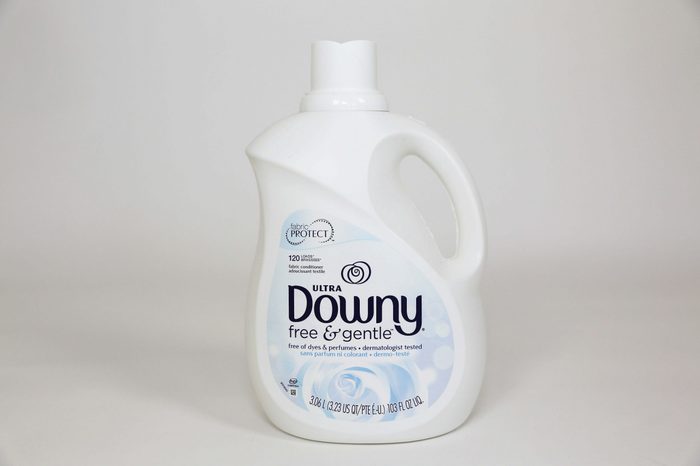
Fabric softener
What is fabric softener really for, anyway? According to recent reports, millennials don’t see the point. As a result, liquid softener sales fell 15% between 2007 and 2015, with Procter & Gamble’s Downy brand plummeting 26% during that time period. For millennials, this might be due to financial reasons (why buy an unnecessary product?) as well as environmental and health concerns with the chemicals in some fabric softeners. So of all the things millennials killed, this might be in the “good riddance” category. Fabric softeners are actually less needed these days because new detergents, washing machines and fabrics make clothes come out less rough than before.
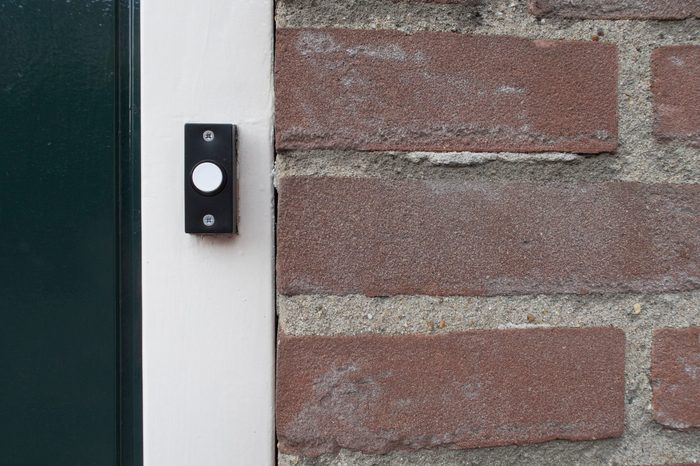
Doorbells
According to a since-deleted viral tweet, millennials don’t ring doorbells anymore—instead, they just text the word “here.” Is this anxiety over face-to-face interaction? Fear of who could be at the door? True, texting makes sense if you’re picking someone up in a car (why get out?), and texting also doesn’t wake sleeping babies or make dogs bark; doorbells also have a tendency to be broken. But in the words of one millennial X user, “The doorbell legit scares me now. I jump every time. It just seems so aggressive now when you could just text.”

Razors
Beards—and now mustaches—are trendy for millennials: With less formality comes less judgment of not maintaining a clean-shaven appearance. Facial hair is authentic, and razor blade replacement cartridges are expensive. Both might be reasons why Procter & Gamble blamed millennials for slumping sales and an $8 billion write-down in 2019. “Lower shaving-frequency has reduced the size of the developed blades and razors market,” P&G Chief Financial Officer Jon Moeller said on a call with analysts, reported MarketWatch. But there might be hope for razor companies, which are expanding their facial-hair grooming products.

Breakfast cereal
Breakfast cereal is perhaps one of the most baffling things millennials killed—at least allegedly. One survey found 40% of millennials find the cleanup involved in eating breakfast cereal—putting the bowl in the dishwasher?—inconvenient. They find that it’s easier to just grab portable food, such as a breakfast sandwich or yogurt, on the go. (Some millennials push back against this explanation, saying they actually don’t eat cereal because it’s processed food, expensive and full of sugar.)
Kellogg is getting creative, though, to try to keep this generation. They’re tapping into millennials’ love of Instagram-worthy food, partnering with celebrity chefs to incorporate cereal into visually appealing concoctions. Corn flakes with avocado and cayenne pepper, anyone?
About the experts
|
Why trust us
At Reader’s Digest, we’re committed to producing high-quality content by writers with expertise and experience in their field in consultation with relevant, qualified experts. We rely on reputable primary sources, including government and professional organizations and academic institutions as well as our writers’ personal experiences where appropriate. We verify all facts and data, back them with credible sourcing and revisit them over time to ensure they remain accurate and up to date. Read more about our team, our contributors and our editorial policies.
Sources:
- Richard Fry, senior researcher at Pew Research Center
- Rachel Flehinger, co-founder of the Adulting School in Portland, Maine
- Julia Skinner, culinary historian and founder of Root Kitchens
- Miron Lulic, founder and CEO of SuperMoney
- Conor O’Loughlin, chief revenue officer of ABC Fitness consulting group
- Pew Research Center: “Millennial life: How young adulthood today compares with prior generations”
- US Census Bureau: “How Does Your State Compare With National Marriage and Divorce Trends?”
- Thriving Center of Psychology: “I Do Not: Gen Z, Millennials Shifting Expectations About Marriage In 2023”
- Bloomberg: “Millennials Kill Again. The Latest Victim? American Cheese”
- Wall Street Journal: “The Trouble With Tuna: ‘A Lot of Millennials Don’t Even Own Can Openers’”
- The Atlantic: “How Millennials (Almost) Killed the Wine Cork”
- CNBC: “Millennials may claim another victim: Harley-Davidson and the classic American motorcycle”
- Wall Street Journal: “Ask Not for Whom the Doorbell Tolls. They Won’t Answer It”
- Washington Post: “Do you use paper towels as napkins at the dinner table? You are not alone.”
- Pew Research Center: “Record Share of Americans Have Never Married”
- Reuters: “Mine versus lab — how green is your diamond?”
- CNN: “Beards are back. That’s bad news for Gillette.”




















